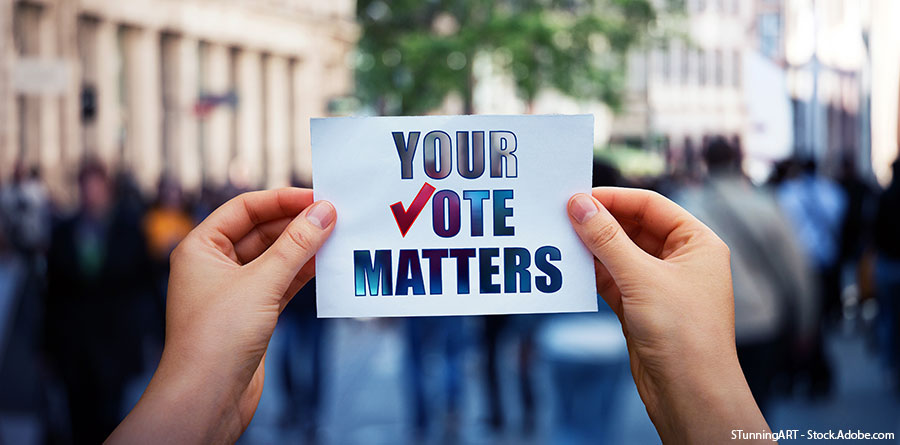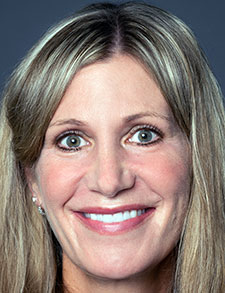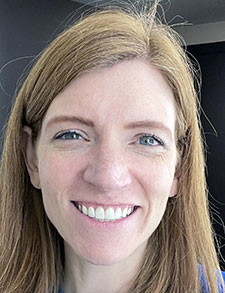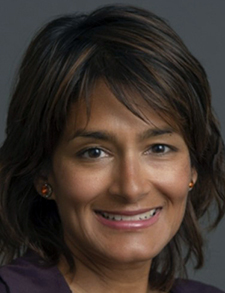

Dr. Sheehy
Healthcare practitioners have firsthand knowledge about the strengths and weaknesses of the current healthcare environment. “Oftentimes, things that are working well (or not) are the result of policy decisions made at the state or federal levels,” said Ann Sheehy (@SheehyAnn ), MD, professor of medicine in the division of hospital medicine, department of medicine, at the University of Wisconsin School of Medicine and Public Health in Madison, Wis., an academic hospital with almost 600 beds at its main hospital. “Advocacy is the means to change policy, and voting is the most basic form of advocacy. When physicians vote, they help to select leaders who they think will implement healthcare law and regulations aligned with better patient care and improved clinical practices.”

Dr. Webb
But, according to Nicole Webb (@DrNikki4Kids ), MD, FAAP, a pediatric hospitalist at a large tertiary urban hospital in California, it’s not enough simply to vote. “Increasing voter participation and supporting efforts to combat voter suppression are even more important,” she said. “We have to understand the entrenched, structural barriers to voting and participate in efforts to combat them.”
Structural barriers, such as housing and job insecurity, gerrymandering, lack of affordable childcare, and an ever-widening digital divide, among many other issues, have led to low voting rates in a population that is most critically in need of representation in the political process. “Understanding that, and working toward efforts to increase voting participation in our local communities, is crucial,” Dr. Webb said.
Broaching the subject
Bringing up the topic of voting is like discussing any other health topic physicians routinely cover, Dr. Webb said. “Physicians typically ask a lot of pretty invasive questions about sensitive topics because they’re important to providing the best care possible,” she said. “We have to believe that what we’re asking about is important and provide a bit of an elevator pitch for why it matters. You also have to know when to let it go if someone isn’t interested or doesn’t want to talk about it.”
Because politics can be very polarizing, you should frame conversations with patients and colleagues in non-partisan ways aimed at helping to inform them about how to register to vote or cast a vote as opposed to discussions about candidates or political parties, Dr. Sheehy said. For example, a patient may be hospitalized or ill during an election period and may wish to vote absentee rather than vote in person. Programs, such as Vot-ER, help facilitate information sharing about available voting options for patients.

Dr. Mandal
Although the political environment has been fraught in recent years, Atashi Mandal, MD, an internal medicine and pediatric hospitalist at multiple hospitals in southern California, has found that patients are typically amenable to discussions about voting. Oftentimes, patients respond with resignation or apathy, which she views as a ripe opportunity to remind them that the very roots of any healthy democracy reside in each individual’s voice, regardless of how helpless one may feel to change anything. “Although an individual vote doesn’t ensure a particular result, not participating in the process guarantees dissatisfaction when considering the multiplier effect of all non-voters,” she said.
Leveraging patients’ and families’ dissatisfaction or confusion about various utilization and health plan issues, such as durable medical equipment or nursing home benefits, can be a prime opportunity to provide information on how regulations are created. For example, The Centers for Medicare & Medicaid Services’ leadership is politically appointed. Similarly, physicians can discuss how Congress can directly impact healthcare policy. “If someone’s congressional representative is on a committee that legislates health policy, point it out,” Dr. Mandal said.
Regarding conversations with colleagues, providing statistics can be helpful. “Find out what matters to your colleagues and connect the importance of their voting to an issue or patient they’ve connected with,” Dr. Webb said. “Become familiar with resources that make voting easier.”
How to advocate
Many ways exist to promote advocacy. Dr. Webb spends time helping to teach pediatric residents and fellows about advocacy through the California Resident Advocacy Collaborative, which culminates in a legislative advocacy day in Sacramento each year. She’s quite comfortable talking with elected officials about priority issues for kids, including a lack of Medicaid parity, increased coverage for services for parents and children, LGBTQIA+ health, reproductive health, gun violence prevention, increased funding for graduate medical education, and access to affordable drugs. Dr. Webb also works with non-profit groups and has seen many of the bills she’s advocated for successfully signed into law.
Dr. Mandal has visited Sacramento and Washington, D.C. many times to help inform and educate state and congressional representatives about pertinent legislation that can greatly help or hinder physicians. “The majority of legislators don’t have direct knowledge about the grassroots issues facing our patients and profession,” she said. “I advise my colleagues to attend at least one advocacy event organized by a local, state, or national professional society, so they can experience what ‘advocacy’ means. I also encourage everyone to meet their legislators at their district offices. Any constituent can set up a meeting.”
Helpful resources
A variety of organizations, programs, websites, and so forth, are designed to promote or help with the voting process. Vote Kids, a non-partisan Get Out the Vote campaign led by the American Academy of Pediatrics, provides information regarding priority child health issues and the implications of different policies for children.
Several other resources for learning everything you need to know about voting, how to register, where and when to vote, and how to advocate for yourself and others are Vote.org, Vote 411, and When We All Vote. Some of these sites will also link users to resources about candidates and issues. These websites were created with the goal of increasing voting participation, particularly for those with historically low access to or participation in voting, Dr. Webb said. Most states have resources on their Secretary of State website.
Fair Fight Action, which was founded by former Georgia state representative and gubernatorial candidate Stacey Abrams, is designed for individuals who are interested in learning more and getting involved in efforts to combat voter suppression.
Final thoughts
As a group, physicians have abysmally low voter participation.1 “So much of what governs our lives and practices on a daily basis is determined by the outcomes of state and local elections. However, a strong tendency toward only voting in national elections exists,” Dr. Webb said.
On a positive note, absentee voting has helped make voting easier for many individuals who might otherwise face barriers getting to the polls on a certain day due to work obligations or health or mobility issues, Dr. Sheehy noted. On the other hand, voter ID laws and other restrictions and barriers put into place in some areas may impede voting efforts.
The bottom line, Dr. Webb said, is to make the time, make a plan, have a plan B, and remember that you—and all of your patients—will still be affected by the outcome, whether you participate in the election process or not. Although the issues get politicized, the policy decisions made by elected officials affect everyone.
Karen Appold is an award-winning journalist based in Lehigh Valley, Pa. She has more than 25 years of editorial experience, including as a newspaper reporter and a newspaper and magazine editor.
Reference
- Ahmed A, Chouairi F, et al. Analysis of reported voting behaviors of US physicians, 2000-2020. JAMA Netw Open. 2022;5(1):e2142527. doi:10.1001/jamanetworkopen.2021.42527.